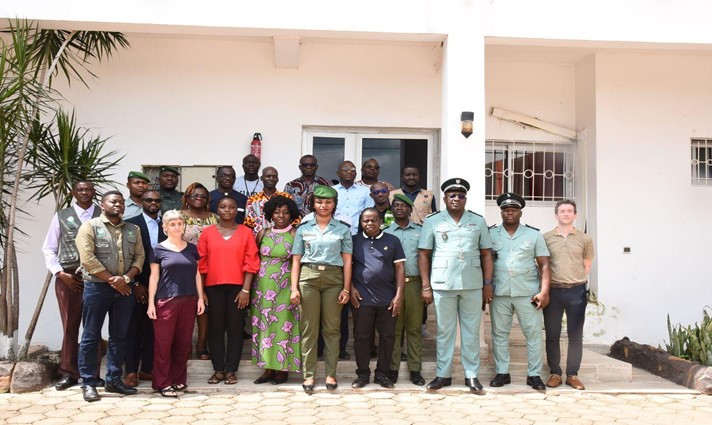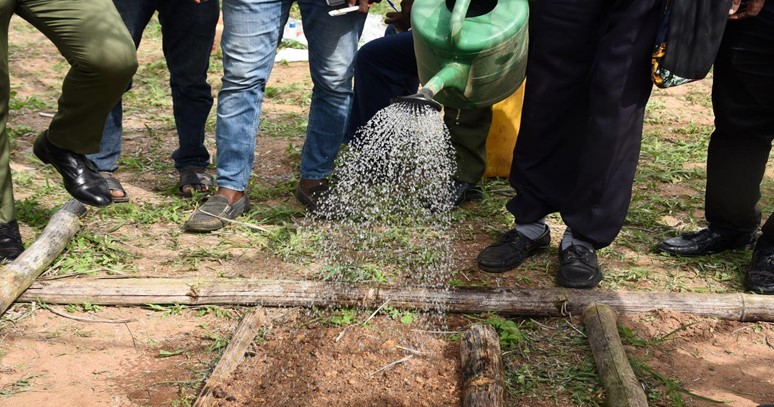
In a world where the delicate balance of nature is under threat, seed collection and restoration efforts are vital for safeguarding our ecosystems and preserving biodiversity. A recent global tree assessment by Botanical Gardens Conservation International (BGCI) found that 30 percent of tree species are threatened with extinction, with at least 142 species recorded as extinct in the wild. Key threats include forest clearance, habitat loss, direct exploitation for timber and other products, and the spread of invasive pests and diseases.
The loss of tree species poses a significant threat to global biodiversity, impacting not only plants but also the delicate balance of entire ecosystems. It is therefore crucial that each country does as much as possible to conserve its native and threatened trees to mitigate this risk.
In Côte d’Ivoire, according to the GlobalTree Portal database which compiles the above assessment data with information from other BGCI databases, there are 1,062 native tree species, 18 of which are endemic, and 133 that are globally threatened with extinction. There, local and international actors are working to address threats to remaining tree species through a number of avenues.
A critical piece of the puzzle is promoting the use of native and threatened tree species in restoration strategies. Often, exotic – and in some cases, invasive – species are prioritized in such strategies due to their availability and the comparative wealth of knowledge on how to collect their seeds and propagate them successfully.
In this context, trainers from Botanical Gardens Conservation International (BGCI) and Tooro Botanical Gardens (TBG) recently held a workshop in the city of Divo, which aimed to equip participants with the tools and knowledge needed to safeguard these crucial components of our planet’s green legacy. “The main objective was to train up participants in better practices and foster a deeper understanding of seed collection and propagation techniques,” said Alex Hudson, a plant conservation project manager at BGCI.

Participants and trainers at the close of the workshop. Photo by Gilberte Koffi/ CIFOR-ICRAF
The trainers highlighted the importance of meticulous planning, understanding targeted species, and gathering information about where populations of the species occur and optimal times for seed collection. They emphasized the importance of the planning phase as the foundation of successful conservation efforts, and the necessity of prioritizing threatened trees and capturing genetic diversity for robust propagation stocks.
The trainers also noted that the journey of seed collection is not without challenges, which include the need to ensure access rights before any collection begins and to fill in intricate pre-collection checklists. Resource constraints can also hinder effective seed collection, and community engagement and interdisciplinary collaboration are key: if local people are able to monitor populations of seeding trees and collect seed, this reduces the need for larger groups to travel long distances across the country on a regular basis, and raises awareness locally about the importance of protecting and conserving native and endangered species.
The workshop underlined that restoration is not a solitary endeavour: rather, it thrives on community participation and engagement with various stakeholders, including conservation practitioners, horticulturalists, government institutes, botanists, and scientists.
To address germination challenges, participants were supported to develop proven propagation protocols, ensuring a standardized approach to raising the large numbers of seedlings needed for large-scale restoration. This approach not only supports the successful growth of trees but also facilitates the dissemination of effective conservation practices.
As the participants ventured into practical field sessions, they applied existing knowledge alongside the insights gained during the workshop. They collected seeds in Divo’s botanical reserve, and learnt new methods for sowing seeds in a nursery environment, preparing germination beds, soil mixing, and designing nursery layouts.

Watering the seeds sown during the practical part of the training in a nursery in Divo, Côte d’Ivoire. Photo by Gilberte Koffi/CIFOR-ICRAF
The workshop served as a rallying point for Ivorians committed to nurturing a greener future. Its lessons, from meticulous planning to interdisciplinary collaboration and the urgency of protecting and restoring threatened native trees, has sown the seeds of change. Its legacy is not merely a collection of knowledge, but a call to action for a united front in safeguarding our planet’s precious green heritage.
Acknowledgments
This workshop was an activity under the project Growing threatened tress’s restoration capacity in Côte d’Ivoire’s cocoa landscapes funded by the UK’s Darwin Initiative and led by CIFOR-ICRAF. With partners BGCI and CNF, the project is building capability/capacity to use a wide array of indigenous trees, particularly threatened, tree species in cocoa landscape restoration. Other activities include an inventory of a degraded 6800 ha botanic reserve, supporting nurseries to raise and stock a wider range of trees, and growing the market for them by raising awareness of biodiversity among cocoa and other restoration actors.
We want you to share Forests News content, which is licensed under Creative Commons Attribution-NonCommercial-ShareAlike 4.0 International (CC BY-NC-SA 4.0). This means you are free to redistribute our material for non-commercial purposes. All we ask is that you give Forests News appropriate credit and link to the original Forests News content, indicate if changes were made, and distribute your contributions under the same Creative Commons license. You must notify Forests News if you repost, reprint or reuse our materials by contacting forestsnews@cifor-icraf.org.